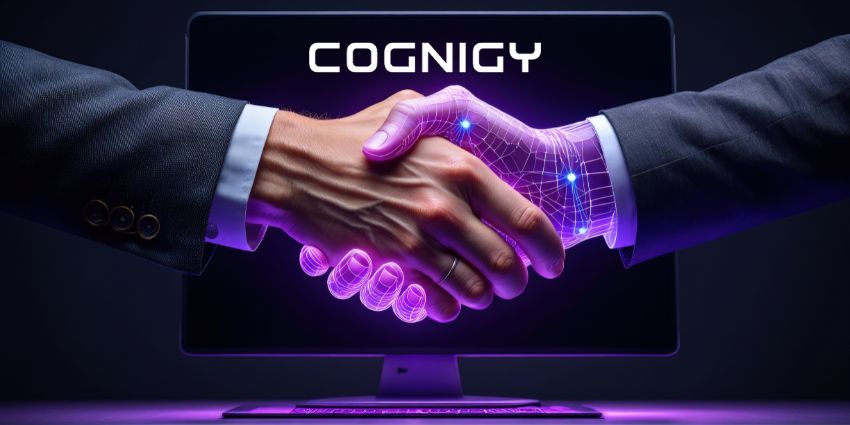Self-service is something that most customers are familiar with today.
We use automated systems in supermarkets to speed-up the checkout process. With help from an FAQ page or guide online, we can often solve various problems without contacting a support team.
As technology becomes more impressive, and contact centre teams struggle to handle increases in demand, innovative self-service solutions could define our future. Today, self-service solutions are rapidly evolving with the implementation of automated tools, artificial intelligence, and virtual assistants. With help from an AI system or bot, customers can unlock a service experience defined by the one feature they value most: speed.
Let’s take a look at how the self-service landscape has transformed in recent years and how companies need to adapt to strengthen their CX strategies.
The Evolution of Self-Service
Self-service in the CX landscape refers to any tools or solutions that allow customers to resolve a problem or complete a task without agent assistant. In the past, self-service was often defined by things like automated checkout solutions or subscription renewal services that customers could access online or over the phone.
Self-service strategies can also include FAQ documents on your website or knowledge bases that help clients to answer questions without human guidance. Self-service solutions are even evident in modern IVR tools, allowing customers to ask questions and get automated responses from an AI tool.
Artificial Intelligence and automation are two of the primary solutions driving the transformation of self-service. With intelligent bots, customers can:
- Find information faster: Intelligent agents can detect keywords in a question and use the information to surface information for a customer to use. A chatbot designed to automatically respond to questions is often more convenient than searching through an FAQ page
- Complete repetitive tasks: With an automated IVR system or virtual agent, customers can complete transactions over the phone, finish purchases without help, and even get information on deals or offers. It’s also possible to renew subscriptions quickly and easily
- Access solutions to problems: AI tools can even assist customers in dealing with common problems, showing them how to troubleshoot an issue, or fix an error. This reduces the demand for agents to solve repetitive problems
Without intelligence, self-service offerings were often slow and clunky. Even some of the initial chatbots and AI tools couldn’t always fully understand customer needs. However, today’s conversational intelligence, natural language processing, and machine learning capabilities are making self-service more intuitive than ever.
Why Self-Service is Essential Today
Self-service solutions are growing increasingly important to good customer experience. Around 75% of people say that self-service offerings are a convenient way to address their support needs. With intelligent self-service tools, you can:
- Be more available to customers: Self-service solutions are available around the clock, unlike human agents. When customers would prefer to try and solve a problem themselves or finish a sale without waiting for opening hours, self-service offerings can help
- Rescue support agents: A significant portion of customer support time is spent on providing the same resolutions to common problems. An intelligent self-service solution can filter out easily handled requests, so agents have more time to focus on more complex issues
- Delight clients: Many of today’s customers expect to have a range of effective ways to complete transactions and address common problems. Self-service is something that’s becoming increasingly necessary as part of a comprehensive CX strategy
- Empower support agents: Self-service solutions like automated bots and live agents can even assist your human agents. These tools can quickly seek out valuable information tam members can use to address problems. You can even pull information from CRM and support ticket systems about a customer, to make interactions more personalized
- Increase profits: Better customer service means you spend less time on complex calls, and more time making money through happy customers. With self-service, you open the door to opportunities for brand growth and increased sales
The New Age of Self-Service
Self-service solutions aren’t just an option for most companies today. In a digital world where your clients are used to getting support instantly and interacting more often with bots and automated systems, most consumers expect at least some aspect of self-service from your company. The key to success is making sure you’re implementing the right tools to enable better self-service.
Some of the most common features of updated self-service solutions include:
- Automation: Chatbots, the rise of artificial intelligence, and machine learning have paved the way for more efficient, automated self-service solutions. Customers should be able to call a number, say a keyword to an IVR system, and finish a transaction all without discussing anything with a human agent. You may even set up systems to automatically transcribe spoken conversations for compliance and eDiscovery later
- Conversational Intelligence: Conversational intelligence is a must-have for today’s self-service solutions. Your customers are growing increasingly comfortable with using things like smart speakers and assistants to get the information they need. Modern self-service offerings should be able to understand all kinds of spoken language and text to give customers the results they need
- Adaptable: The best self-service solutions also make it easy for customers to seek additional human help when they need it. Many leading solutions in the CX market allow consumers to progress their conversation to a discussion with a human agent at the click of a button or a single spoken word when they’re struggling to get the outcomes they need. Make sure that your customers can start an interaction with self-service and continue that discussion with the same context if they decide to speak to a human agent
- Contextual: Today’s customers don’t want to have to repeat themselves to an agent when they’ve just spent ten minutes explaining their issue to a virtual agent. Make sure your self-service and customer experience tools are aligned so the conversation remains contextual and streamlined
Remember, above all else, modern self-service experiences need to be as simple and intuitive as possible for your customers. You should make it easy for your clients to solve their problems, complete a transaction, and achieve other outcomes using your self-service technology, otherwise, they simply won’t use your services.







